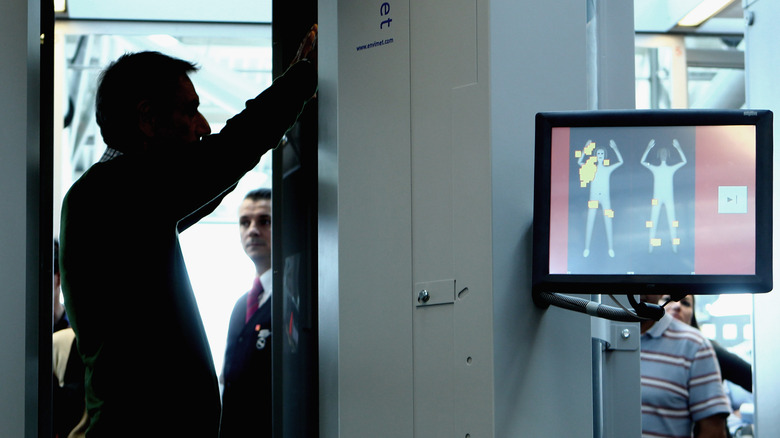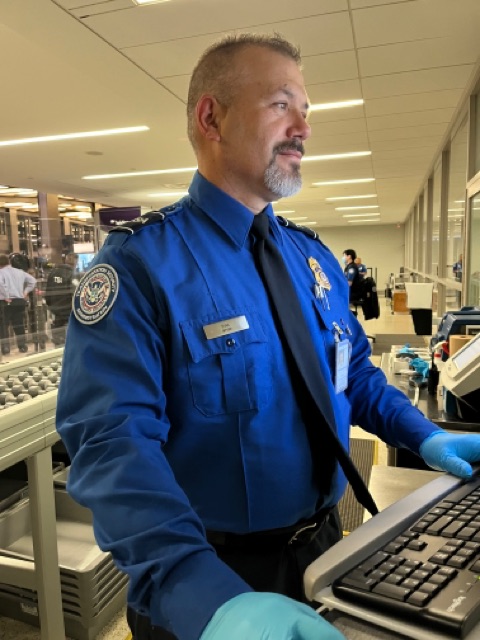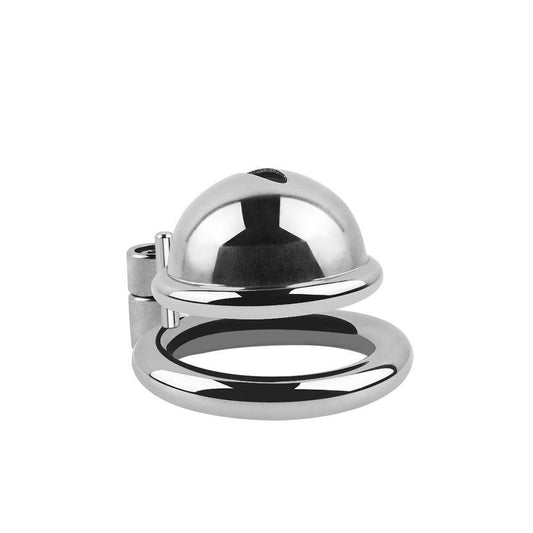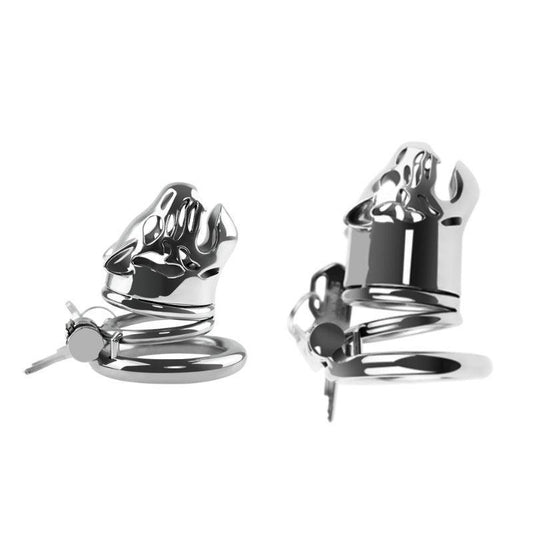Les scanners corporels des aéroports, en particulier les scanners à ondes millimétriques (ceux qui sont souvent utilisés pour les contrôles de sécurité), sont conçus pour détecter les objets sous vos vêtements, notamment les armes, les explosifs et les gros objets métalliques. Ils fonctionnent en utilisant des ondes radio pour créer une image du corps, mettant en évidence les zones qui peuvent nécessiter un examen plus approfondi. Cependant, la capacité de ces scanners à détecter une cage de chasteté dépend de plusieurs facteurs, tels que le matériau de la cage et la taille de l'appareil.
Voici une analyse plus détaillée :

1. Type de scanner :
- Les scanners à ondes millimétriques : ce sont les scanners les plus couramment utilisés dans les aéroports. Ils émettent des ondes radio inoffensives pour scanner le corps et détecter les objets cachés, créant une image que le personnel de sécurité analyse. Bien que les scanners à ondes millimétriques soient très efficaces pour détecter les objets sous les vêtements, ils ne révèlent pas toujours la nature exacte de l'objet. Ils peuvent indiquer la présence de quelque chose (une « zone suspecte »), mais la forme ou la taille spécifique de l'objet n'est pas toujours claire. Pour une cage de chasteté, cela peut signifier que l'appareil est remarqué comme un objet sous les vêtements, mais il ne sera pas nécessairement signalé comme suspect à moins que la taille ou le contour ne ressorte.
- Scanners à rayons X à rétrodiffusion : certains aéroports utilisent des machines à rayons X à rétrodiffusion, qui créent une image détaillée du corps en faisant rebondir des rayons X à faible dose sur la peau. Ces scanners peuvent fournir une image plus claire des objets plus petits, et si vous portez une cage de chasteté en métal, cela peut être plus visible. Cependant, ces scanners sont moins couramment utilisés aujourd'hui en raison de problèmes de confidentialité et de risques pour la santé.

2. Détection de cages non métalliques :
- Cages en silicone ou en plastique : si vous portez une cage de chasteté non métallique, comme une cage en silicone ou en plastique, il est beaucoup moins probable qu'elle déclenche une alarme dans l'un ou l'autre type de scanner. Bien que ces matériaux puissent toujours être détectés, les images produites par les scanners ne sont souvent pas suffisamment détaillées pour mettre en évidence les petits objets mous. Les cages non métalliques sont généralement plus discrètes, à la fois en termes de confort et de sécurité de passage.
- Cages métalliques : les cages de chasteté métalliques, en particulier celles en acier inoxydable, sont plus susceptibles d'être détectées par un scanner corporel. Les composants métalliques (comme le verrou ou la cage elle-même) apparaîtront plus clairement lors du scan, en particulier avec les rayons X rétrodiffusés ou dans les scanners à ondes millimétriques où le contour de l'appareil peut être visible. L'agent de sécurité ne sera peut-être pas en mesure de dire exactement de quel objet il s'agit à moins qu'il ne ressorte nettement, mais cela incitera probablement à une inspection plus approfondie.

3. Processus de sécurité après détection :
Si le scanner corporel détecte un objet sous vos vêtements, le personnel de sécurité vous demandera généralement de vous soumettre à un contrôle supplémentaire. Voici ce qui pourrait se passer ensuite :
- Fouilles manuelles : si le scanner détecte quelque chose, l'agent de sécurité procède normalement à une fouille pour vérifier si des objets sont dissimulés. Dans ce cas, une explication discrète peut souvent résoudre la situation rapidement. Vous pouvez simplement mentionner que vous portez un dispositif de chasteté et demander à ce que la fouille soit privée si nécessaire.
- Contrôle privé : Si vous êtes soucieux de votre vie privée, vous pouvez demander un contrôle privé pour éviter les situations inconfortables. Les agents de sécurité des aéroports sont généralement formés pour gérer ce type de demandes de manière discrète et professionnelle.

4. Conseils pour voyager avec une cage de chasteté :
- Options non métalliques : envisagez de porter une cage de chasteté en silicone ou en plastique si vous souhaitez éviter qu'elle soit signalée par les scanners de l'aéroport.
- Préparez-vous aux questions : Si vous portez une cage de chasteté en métal ou si elle est détectée par le scanner, soyez prêt à expliquer la situation brièvement et poliment. Il peut être utile de dire : « C'est un objet personnel et je suis prêt à passer des contrôles supplémentaires si nécessaire. »
- Contrôle privé : Si vous préférez préserver votre intimité ou si vous craignez un embarras potentiel, demandez un contrôle privé avant de passer la sécurité. Cela vous permettra d'expliquer votre situation en toute discrétion, sans attirer l'attention.

Conclusion:
Dans la plupart des cas, les scanners corporels dans les aéroports peut détecter une cage de chasteté, surtout si elle est en métal. Cependant, le niveau de détail fourni par l'analyse peut ne pas révéler immédiatement de quel objet il s'agit, et il peut simplement déclencher un examen secondaire. Les cages non métalliques en silicone ou en plastique sont généralement plus discrètes et moins susceptibles d'être signalées, bien qu'elles puissent toujours être détectées dans certaines circonstances.
En fin de compte, voyager avec une cage de chasteté n'est pas quelque chose dont il faut s'inquiéter outre mesure, mais se préparer à des contrôles supplémentaires, notamment au niveau de la sécurité à l'aéroport, contribuera à garantir une expérience fluide et discrète. Si vous êtes inquiet, vous pouvez toujours opter pour une cage non métallique ou vous renseigner sur les options de confidentialité au point de contrôle de sécurité.








